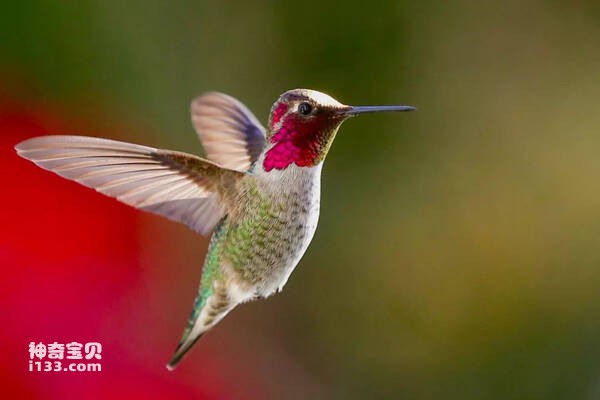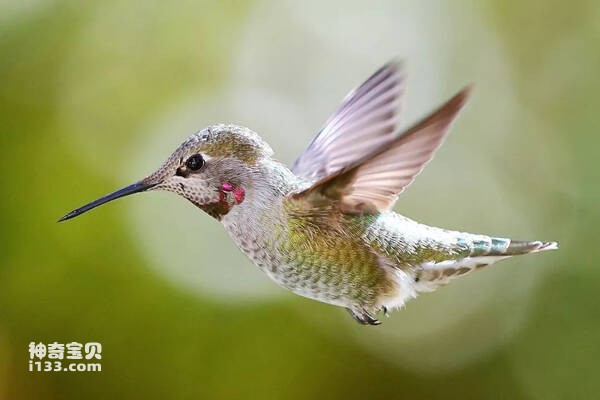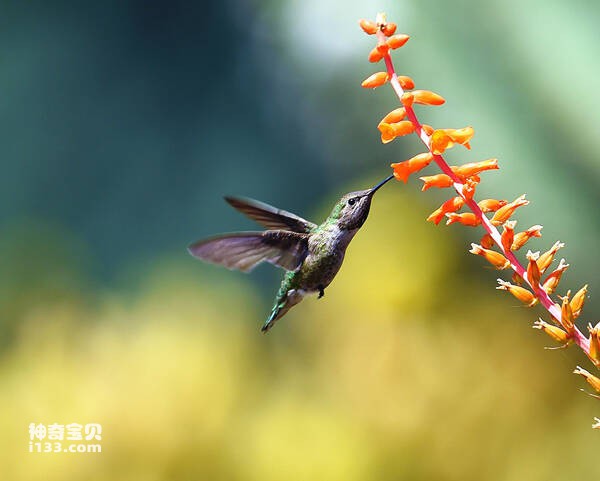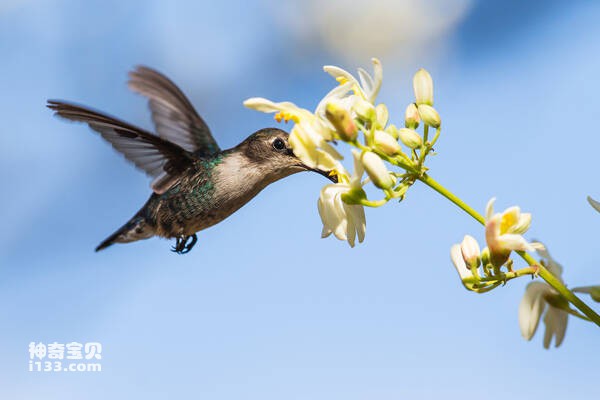Mellisuga helenae
IUCN
LCBasic Information
Scientific classification
- name:Mellisuga helenae
- Scientific Name:Mellisuga helenae,Bee Hummingbird,Zunzuncito
- Outline:Climbing birds
- Family:
Vital signs
- length:5.5-6.1cm
- Weight:1.95-2.6g
- lifetime:No textual research information is available
Feature
It is the smallest species of hummingbird
Distribution and Habitat
Origin: Cuba. It is scattered along the coasts of Havana, Andia, Guana Acavives Peninsula, Zapata Marshes, Mova, Mayari, Guantanamo, and the neighboring Isle of Youth.
Bird distribution: Bahamas.
It lives mainly in mature and marginal forests with dense shrubs, vines, and epiphytes nearby, but also in valleys, gardens, and swamps, most commonly in open fields.
Appearance
The adult female bird has blue-green upper body plumage, white or light gray lower body plumage, and white wing tips on the outer tail feathers. The female is slightly larger than the male.
In non-breeding season, there is little difference in color between male and female birds. The male's upper body feathers are blue, and the wingtips of the outer tail feathers are black and blue-spotted.
The head, chin, and throat are shiny pink and the neck spots are iridescent and extend to the side of the neck during the breeding season. The upper body feathers are bluish, and the lower body is mainly grayish white. These colorful feathers appear only during the breeding season, last for a short time, and soon fall off.
Size measurement: weight 1.95g, ♀2.6g; Body length 55.1mm, ♀61.2mm; The wingspan is 32.5mm.
Details
The Zunzuncito Bee Hummingbird (Mellisuga helenae) is one of the world's smallest birds and the world's smallest warm-blooded animal.

Bee-sucking birds seek and actively protect high-quality food sources. Males mark out feeding areas and chase off other males and large insects, such as bumblebees and moths, that intrude on their territory. It feeds on the nectar of various flowers, especially plants with sucrose concentration of up to 15-30%. It first hovered horizontally over the flowers when extracting nectar, and inserted the beak into the flowers to sip nectar with a long tongue. They also eat small spiders and insects, often during night flight, and can catch more than 2,000 insects per day during the nesting period, and insect protein intake is particularly important for feeding their young during the breeding season. Bee-sucking birds are active and must forage extensively to supplement their energy expenditure, usually consuming half of their body mass in food and eight times their body mass in water per day.
Although the bee-sucking bird is small, it can vibrate its wings about 80 times per second in a "figure eight" motion. It can fly forward and backward with great agility and hover in the air. When courting and showing off, it can flutter its wings 200 times per second.

The song of a bee-sucking bird is a high-pitched song consisting of a variety of simple single notes repeated, each lasting less than a second, like a "squeak, chirp." The single notes in the song sequence differ between individual males in different mating sites.
The breeding season for bee-sucking birds is from March to June, when the rainy season ends and the dry season begins, and many trees and shrubs bloom. Except during the breeding season, the birds are usually alone, and the male birds actually participate in the breeding process only to mate with the female birds, but do not migrate and roost together, so there is no pairing relationship. After mating, the female bird is immediately separated from the female bird, and the male does not participate in the selection, construction and rearing of the nest. The female weaves together plant fibers (3 cm in diameter) to construct a small cup-shaped nest, which is decorated with moss. The nest material is usually soft plant fibers, animal hair and feathers, and uses spider silk and other adhesive materials to strengthen the nest structure. Such nests are generally placed on low thin branches 0.9 to 6 meters from the ground, surrounded by trees or shrubs.

A brood of 2 eggs, white as pea size, no more than 6 mm long, incubation period of 14 to 16 days. The female birds raise chicks alone, and the chicks' food is fed by the female birds after feeding, and the chicks' feathers grow out of the nest in about 18 to 38 days, and the offspring can be bred in about 1 year.
Due to the destruction and reduction of habitat, resulting in a historic decline in the population of bee-smoking birds, a large amount of natural vegetation has been developed into farmland and pasture, and only 15-20% of the country has remained natural, and the expanding production of cocoa, coffee and tobacco leaves has further posed a serious threat to its living environment.

The smallest bird in the world: The smallest bird is the hummingbird on the Island of Youth in Cuba. The male is 57 mm long, half of which is occupied by the beak and tail, and the female is 1.6 g long, slightly larger. (Guinness World Records)
Protect wild animals and eliminate wild meat.
Maintaining ecological balance is everyone's responsibility!








